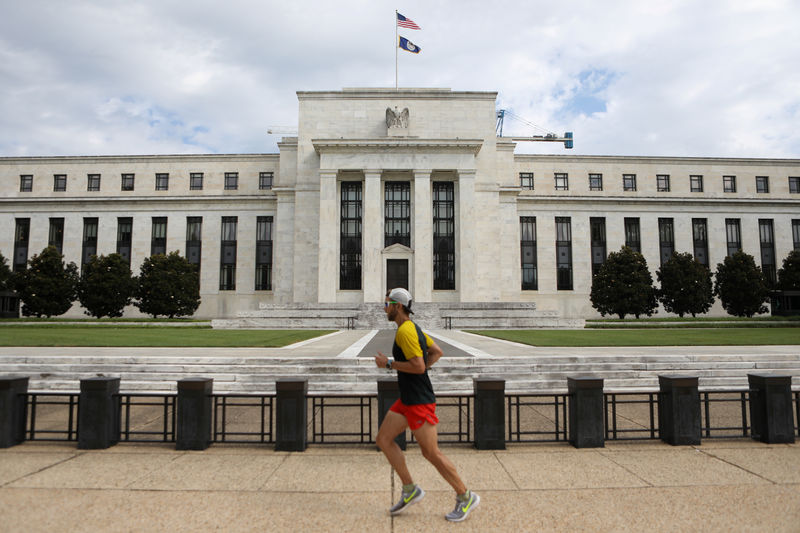By Yasin Ebrahim
Investing.com -- The Federal Reserve raised interest rates on Wednesday for the first time in more than three years and signaled seven rate hikes for this year to bring inflation under control.
The Federal Open Market Committee raised its benchmark rate to a range of 0.25% to 0.5% from 0% to 0.25% previously.
The start of liftoff on interest rates was widely expected as Federal Reserve Chairman Jerome Powell said earlier this month that he would favor a 0.25% hike at the March meeting.
The March rate increase is expected to be followed up with several more hikes later this year, as Fed members have turned increasingly hawkish since December.
The Fed is now forecasting its benchmark rate to rise to 1.9% in 2022, well above the 0.9% forecast in December, pointing to about seven 0.25% rate hikes, the Fed’s Summary of Economic Projections showed.
Ahead of the meeting Wall Street was pricing about six to seven rate hikes for this year.
For 2023, the Fed sees the Federal funds rate at 2.8%, up from its prior projection of 1.6%. The Fed's terminal rate for Fed funds – the rate that coincides with its mandate of full employment and stable inflation – was downgraded to 2.4% from 2.5% previously.
The start of Fed’s rate-hike cycle hike comes as the central bank looks to step up its fight against inflation to ensure elevated price pressures don’t become entrenched.
The core personal consumption expenditures price index, the Fed’s preferred inflation measure, jumped to 5.2% in February, the biggest increase since April 1983.
Many have argued that the central bank has left it too late to tackle inflation, and now finds itself having to play catch up. But tightening too aggressively into an economy that is expected to slow, runs the risk of recession.
Powell, however, believes the Fed is still capable of delivering a soft landing.
“[It’s] more likely than not that we can achieve what we call a soft landing ... which is get inflation back under control without a recession,” Powell said in testimony before Congress earlier this month.
The road to price stability for the Fed will be long and has been paved with more headwinds in the wake of the Russia-Ukraine war that has pushed prices even higher.
“Powell clearly understands that the Fed is going to really have to focus on inflation now as it's gotten far beyond their expectations,” Dean Smith, chief strategist and portfolio manager at FolioBeyond's said in an interview with Investing.com on Tuesday.
“But this isn’t something that you can reduce in a short period … it's going to take a while,” Smith added.
Traders are expected to shift attention to Powell's press conference at 2.30 PM ET (19:30 GMT), for more clues on the Fed’s path of monetary policy tightening and plans to cut its balance sheet.
